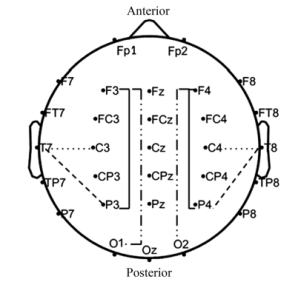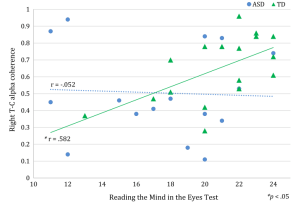
What is joint attention?
The world contains various creatures, but we humans are notable for our abnormally strong ability to communicate.
At the foundation of the human ability to communicate is the capacity to “see what the other person is seeing.”
Babies are able to understand what their mothers are looking at and encouraging from the direction of their gaze and where they are pointing, which allows the babies to develop the ability to read the other person’s intentions and understand language, but in autistic spectrum disorder (ASD) the nervous foundation for joint attention differs from that for typical development children, causing delayed development in language and communication abilities.
Can activity relating to joint attention actually be measured?
The paper I discuss today investigates relationships between electrodes when adolescents with ASD and adolescents with typical development were asked to perform a joint attention task and their brain waves while doing so were measured.
In the study, the subjects were shown video clips like the following and joint attention was actually stimulated.

Brain waves during the task were measured and the types of relationships between the electrodes that measure brain waves were investigated using the patterns below.

In the adolescents with typical development, the results showed that subjects with higher ability to sense other people’s thoughts had stronger relationships between the right temporal–parietal regions, which supports results in prior research showing that the right temporal–parietal regions are important for joint attention, but the adolescents with ASD exhibited large differences between individuals and results like these were not produced.

Many cases are lumped together under ASD because they have similar symptoms, but I wondered whether the brain characteristics for each case show great difference between individuals and do not lend themselves to generalization. I also thought that if brains with ASD are difficult to generalize, the methods for intervention may also not be able to generalized.
Reference URL: Reduced Temporal-Central EEG Alpha Coherence during Joint Attention Perception in Adolescents with Autism Spectrum Disorder











